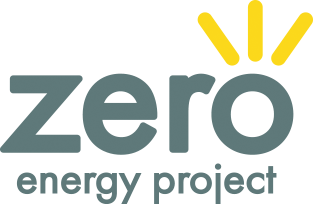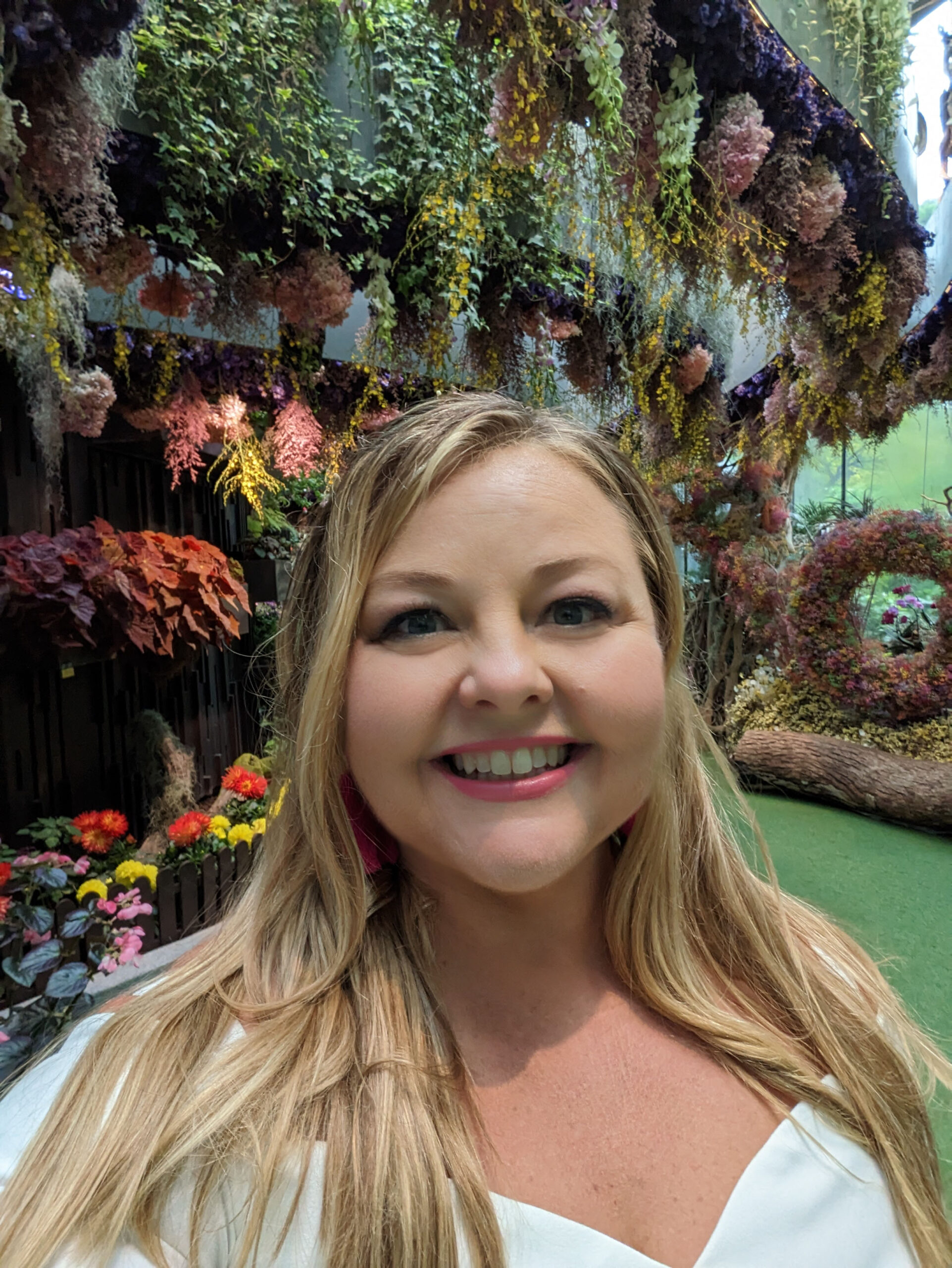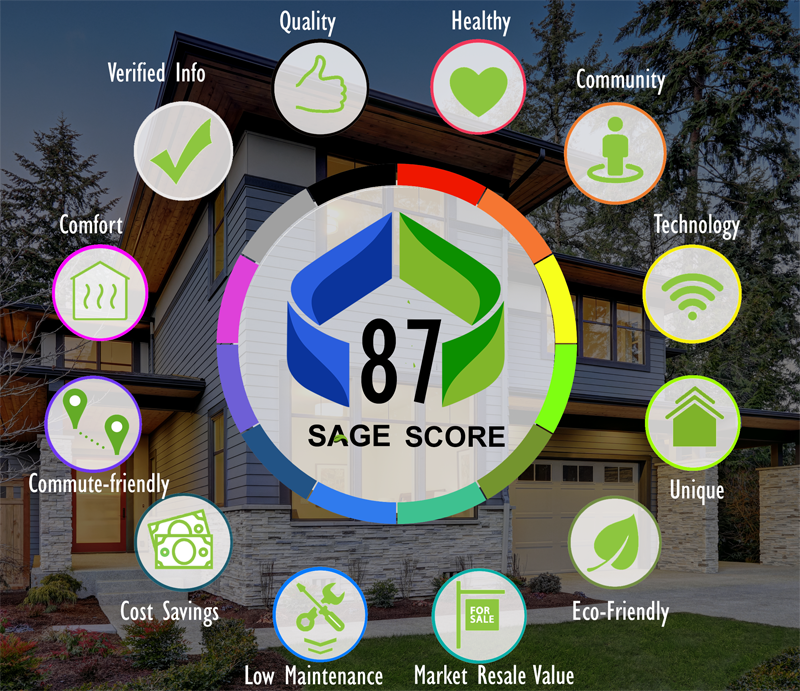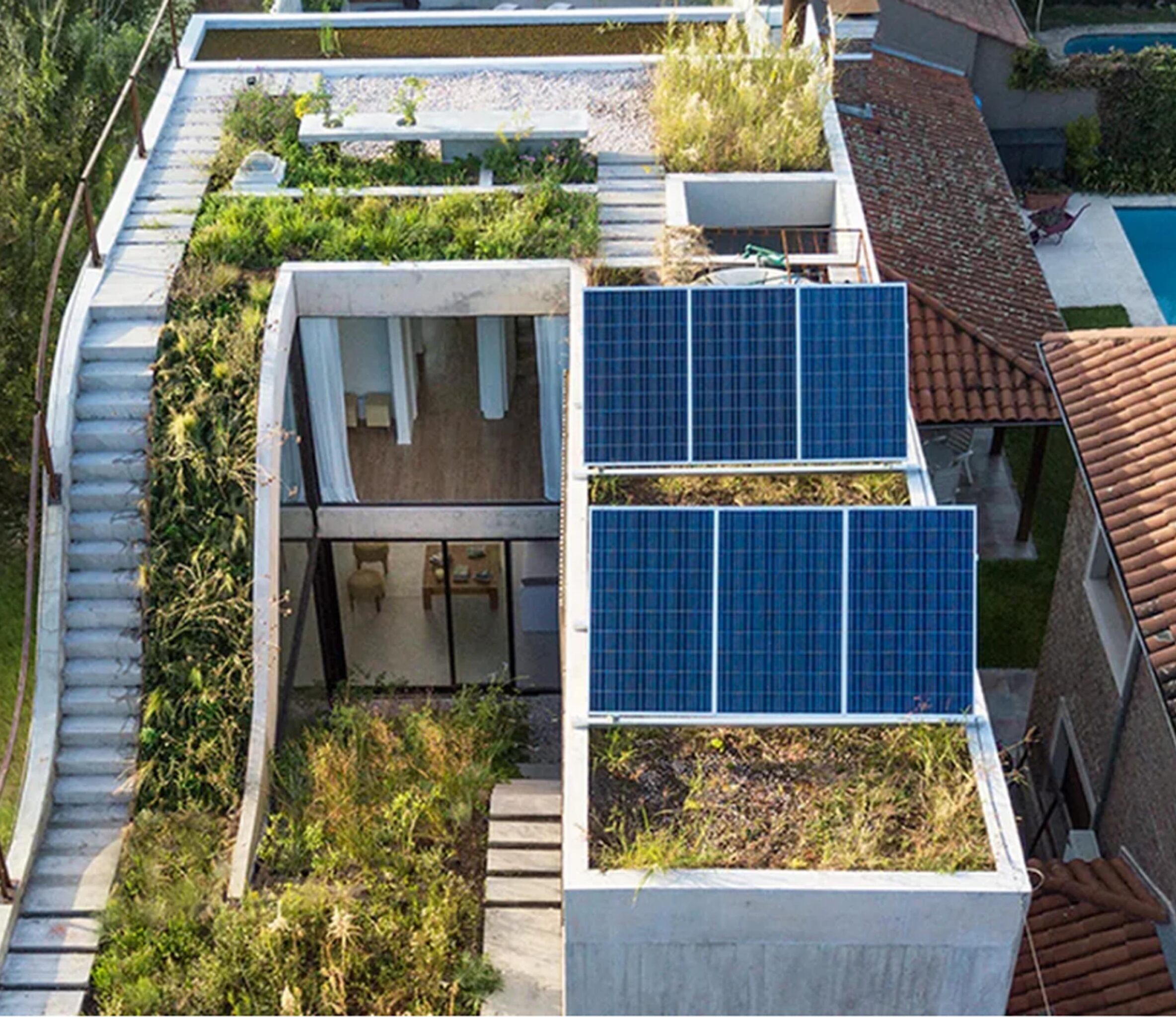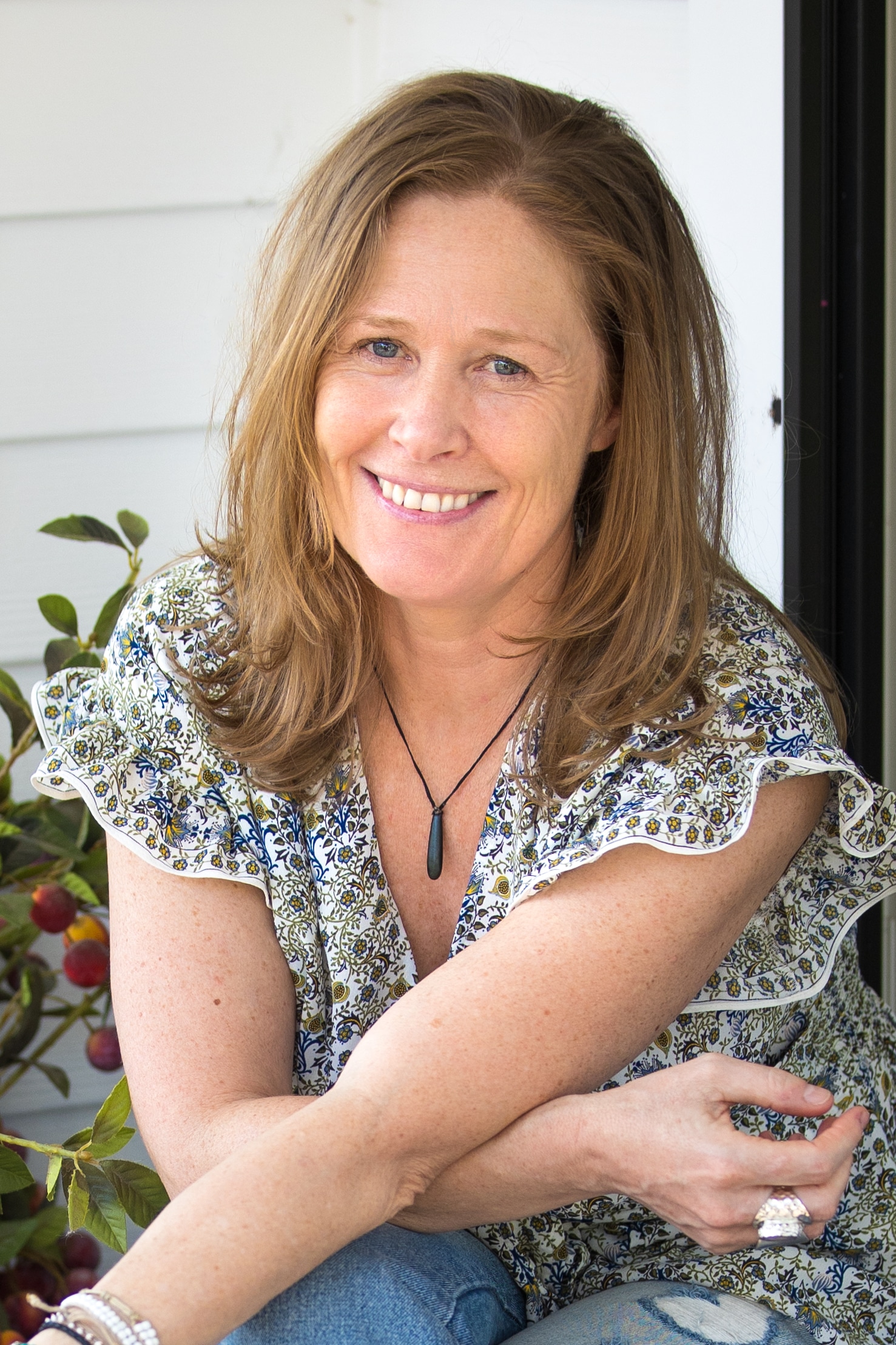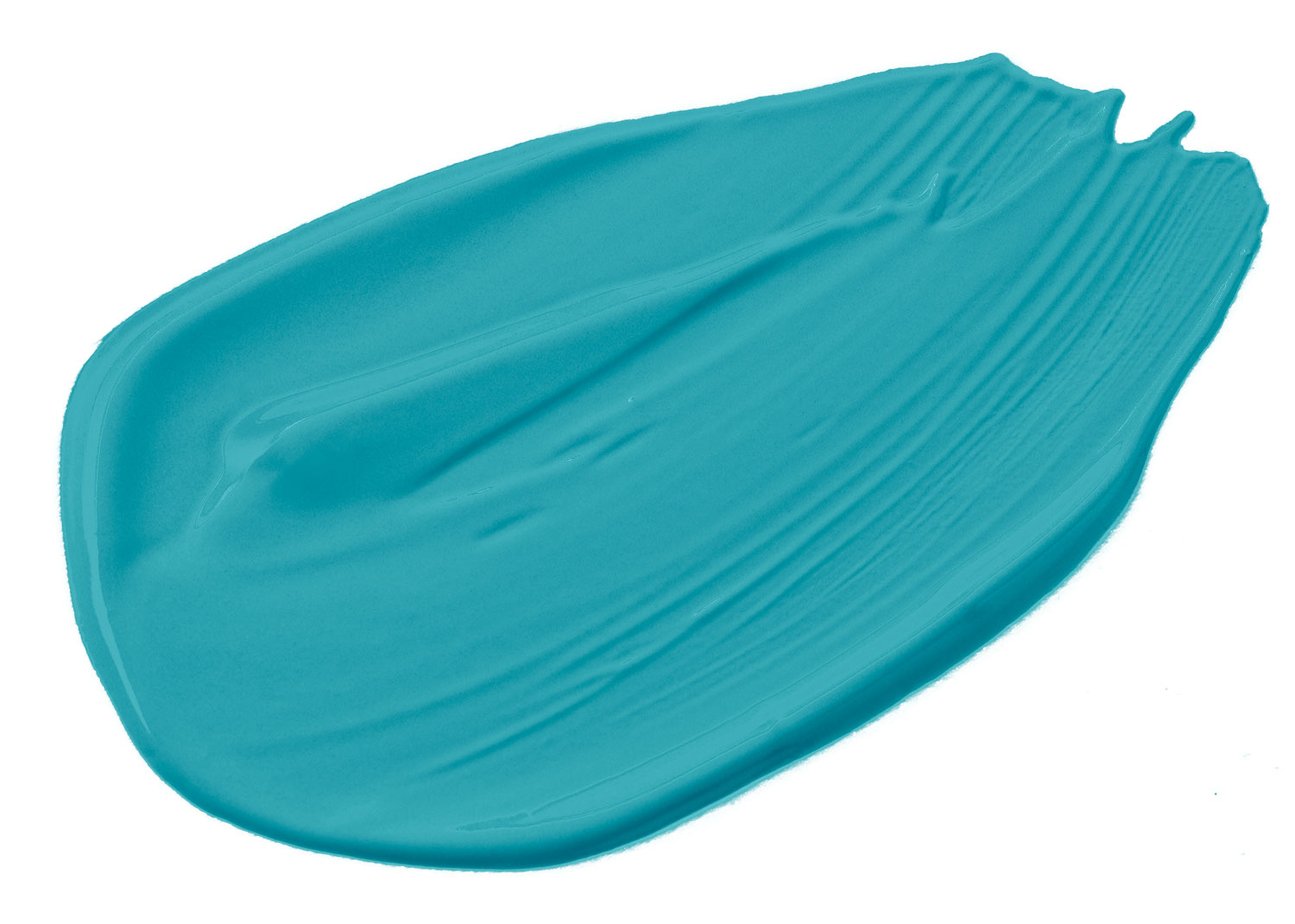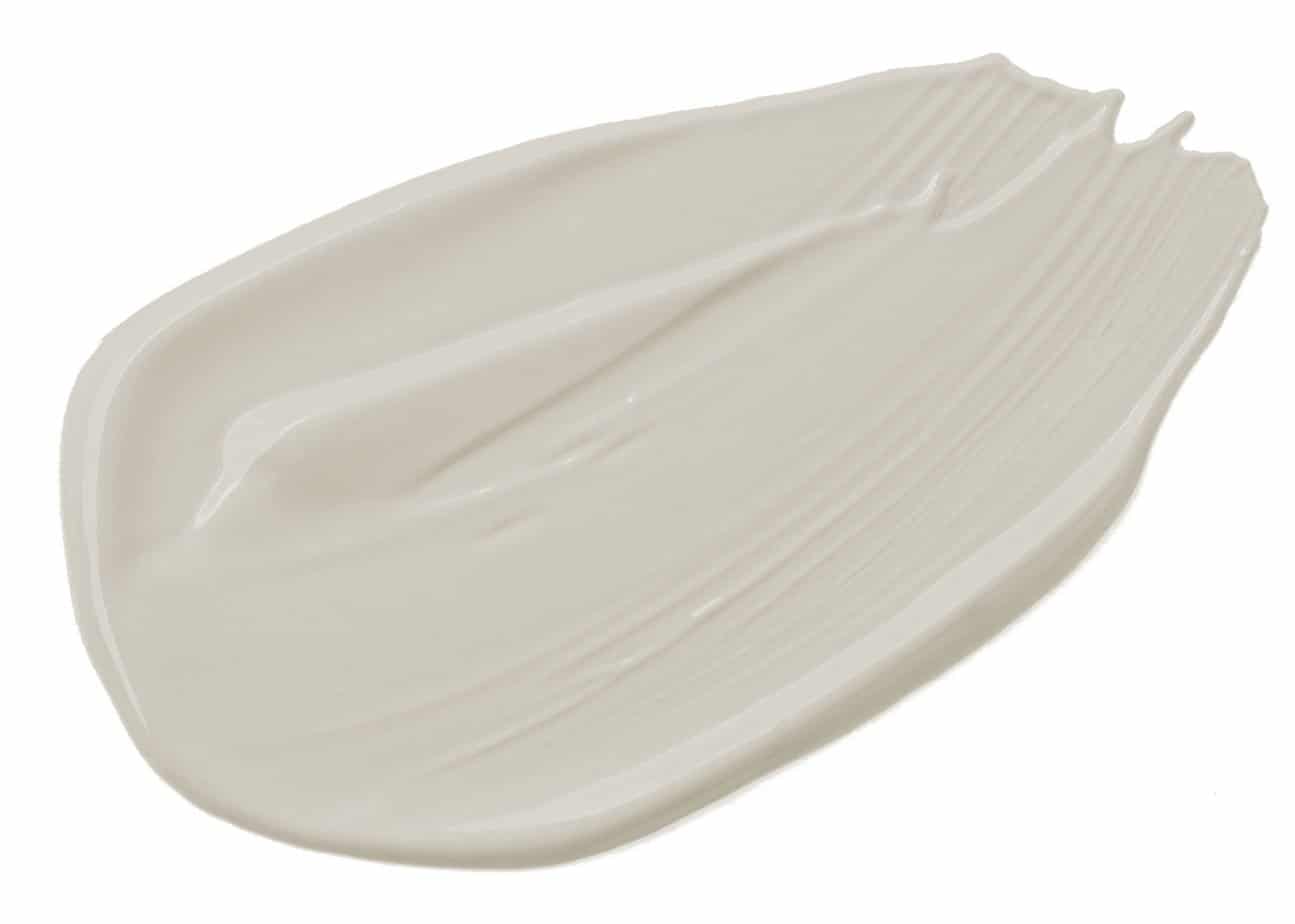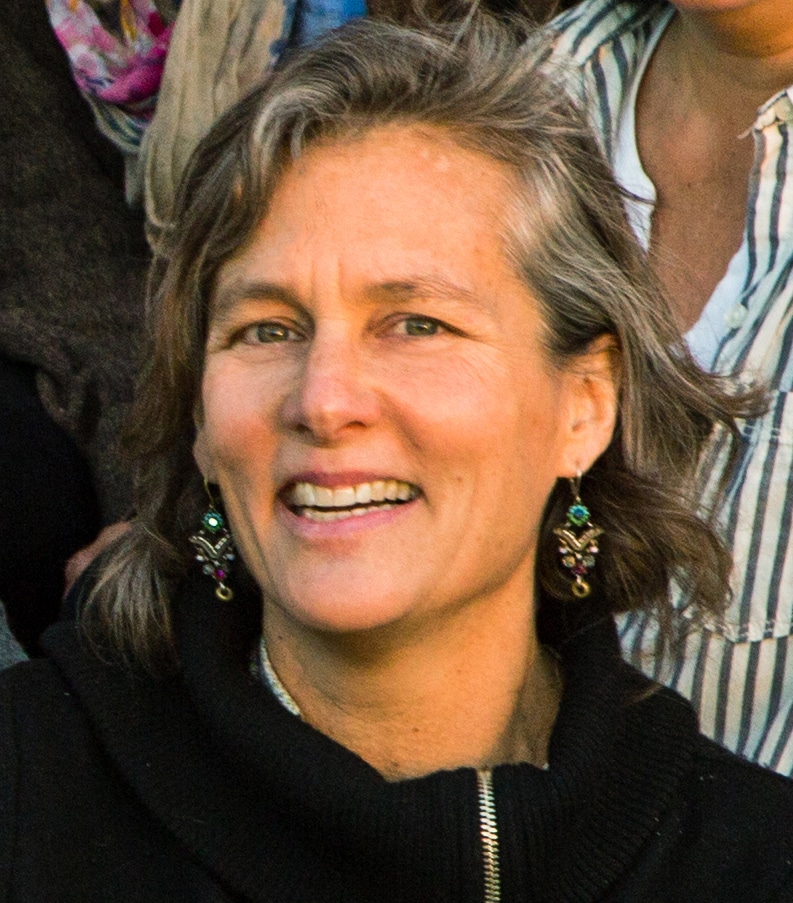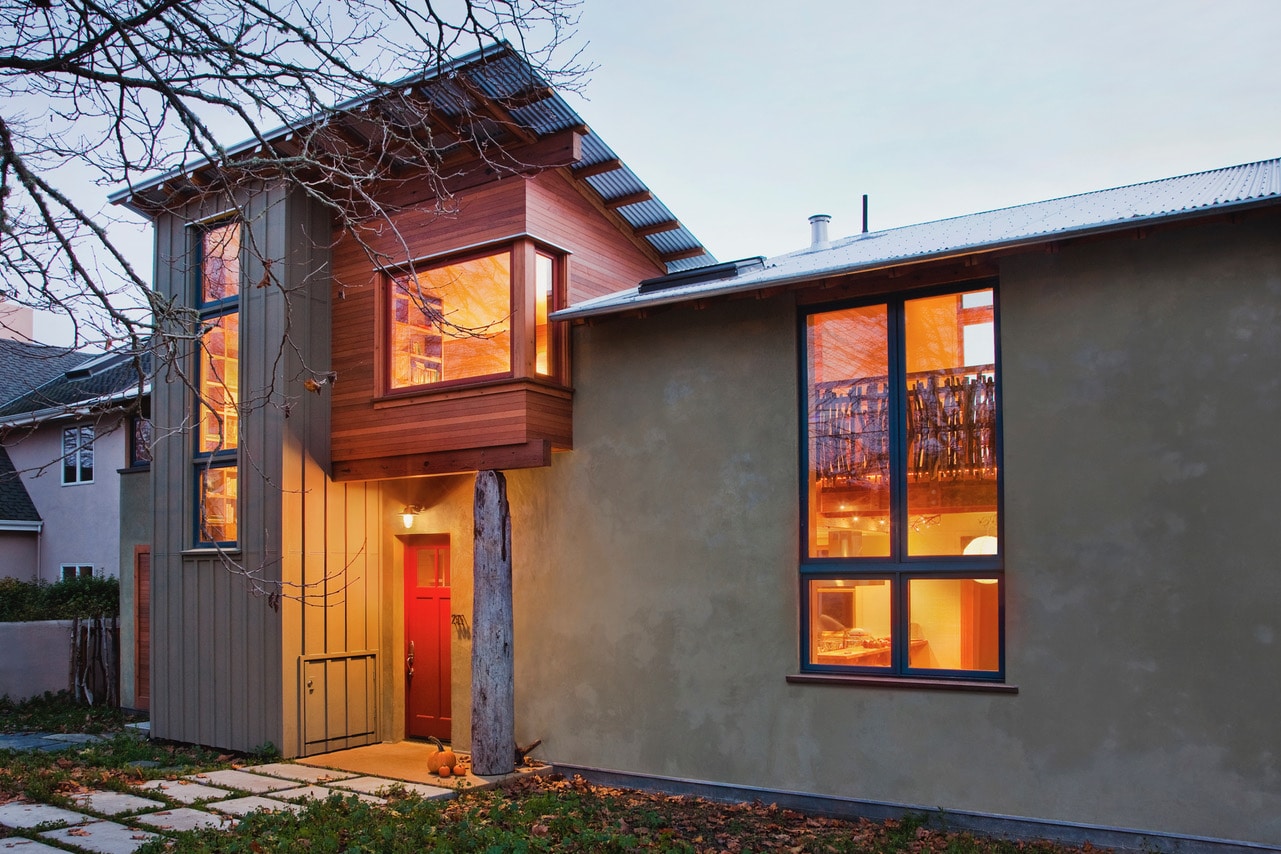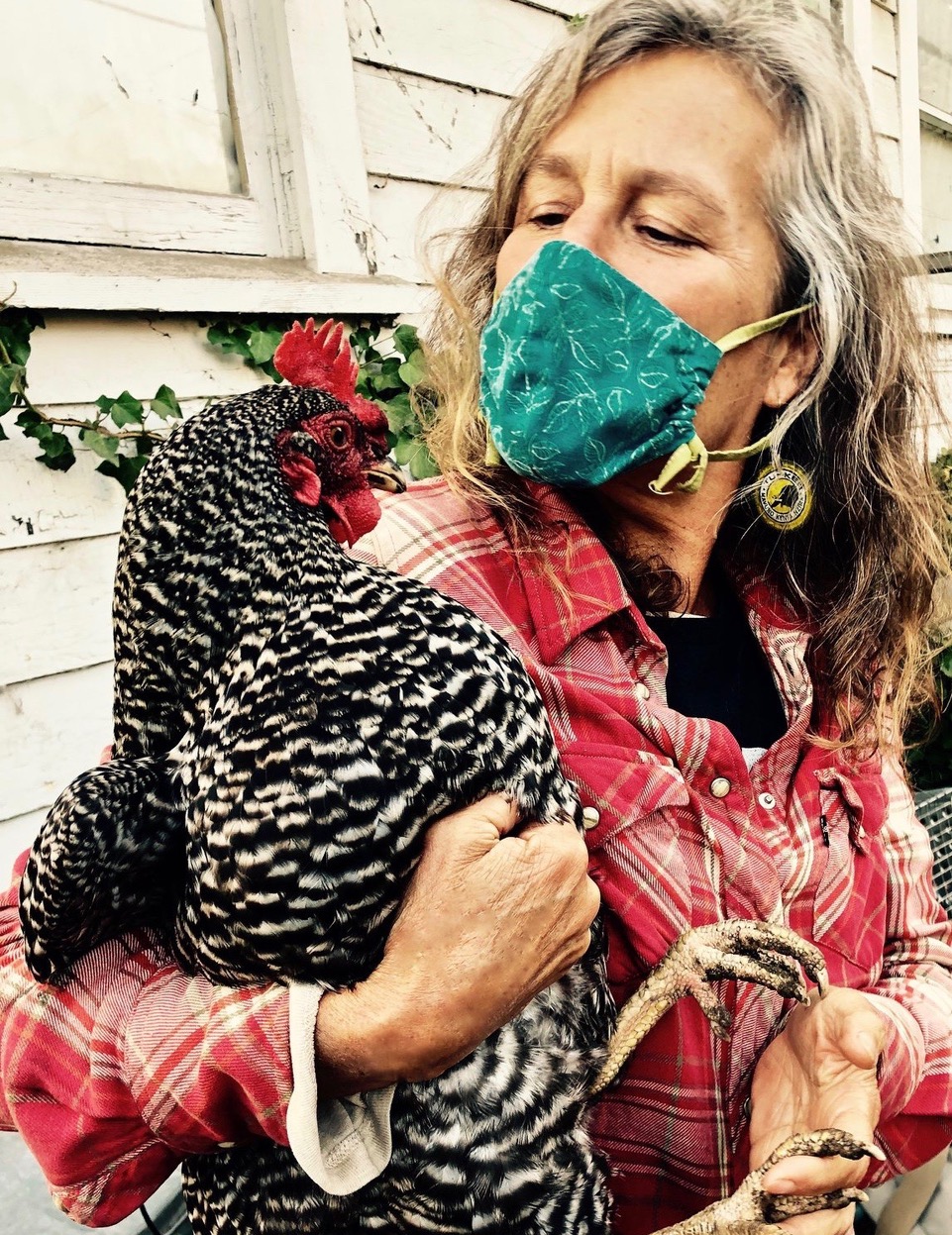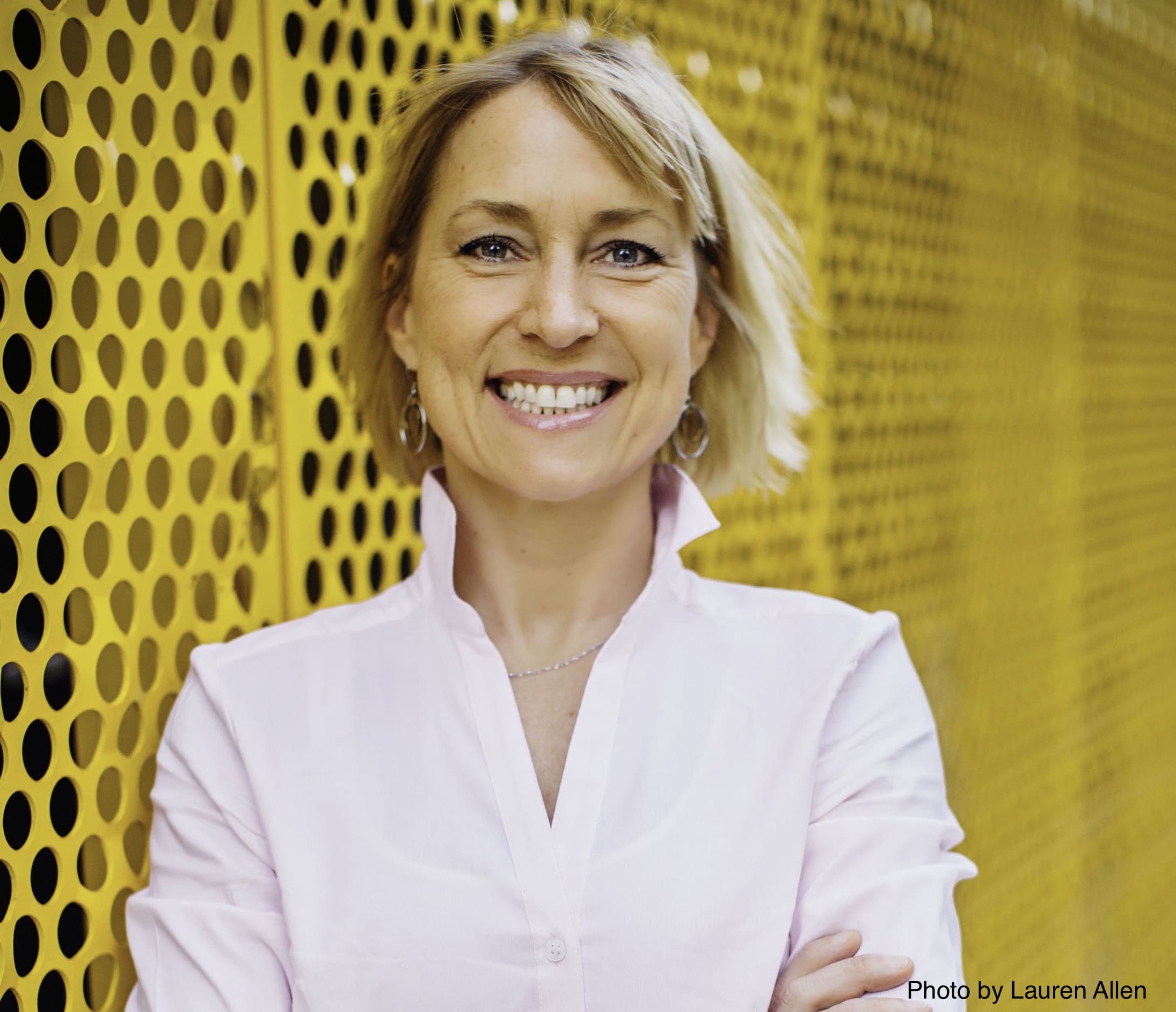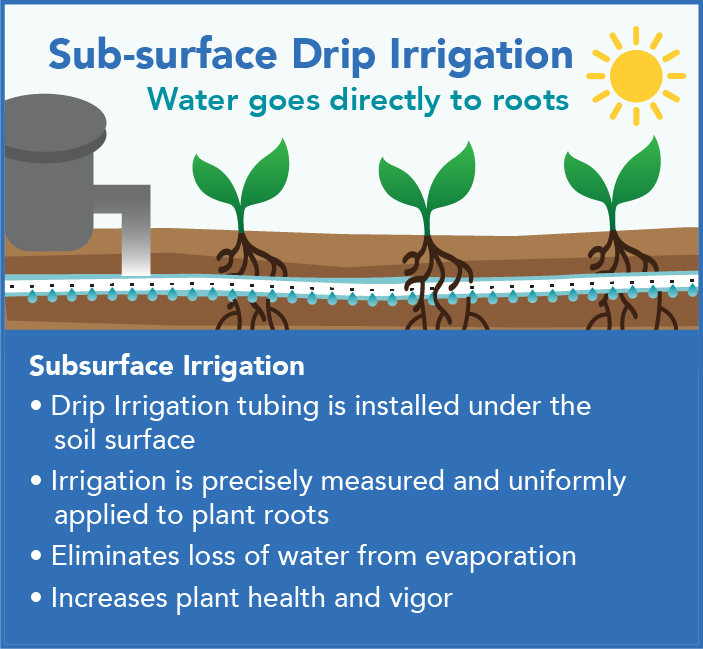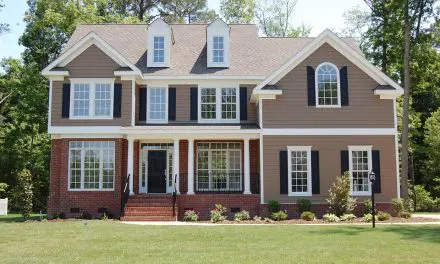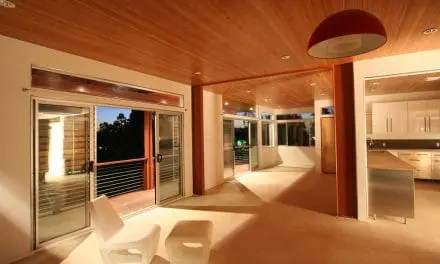Image courtesy Recolor
By Elaine Markoutsas
Meet the women helping to make the planet safer and healthier
It takes a village to tackle global environmental concerns. But it starts with individuals, and we want to celebrate them. With gender equality listed as number 5 on the list of UN Sustainable Development Goals, we’re highlighting women who are ushering in a new era of sustainability. These women come from different sectors with different focuses—recycling paint, ecological planning and building, and helping businesses contain their environmental footprint. But what they all have in common is their passion for sustainability and making the world a healthier, more mindful place. Join us in meeting these trailblazers who are paving the way toward a greener future.
Kari Klaus
Realty Sage
Kari Klaus is the Founder and CEO of Realty Sage, a dynamic real estate platform solving one of the largest obstacles to consumer adoption of high performance and sustainably built homes: education and return on investment. Realty Sage applies intelligence to big data, shaping consumer behavior and improving ROI on clean and smart technology investments for high-performance homes and homes with renewable energy. Klaus’s award-winning tech startup company showcases eco-certified homes and evaluates the features of millions of homes across the country, applying a Sage Score based on the home’s sustainable features, clean energy, certifications, and overall sustainable design.
Klaus also advances clean energy advocacy and integration as a former Arlington, VA, member of the Environment and Energy Conservation Commission, and through her work as a speaker for the US Department of State’s Bureau of International Information Programs.
“If you believe that you are always making an impact of some kind, then you should try to always make it the positive kind,” —Kari Klaus
Q: What led you to focus Realty Sage on sustainability?
A: My passion for sustainability in real estate is fueled by the understanding that residential properties are not just four walls and a roof. They are key contributors to global carbon emissions, impacting our health, neighborhoods, and economy. As one of the most important industries in the world, we must transform housing to address sustainability and climate change.
The existing marketplace for homes does little to incentivize homeowners in adopting new technologies, products, and advanced building techniques. If agents are unable to market them properly, homeowners and investors are unlikely to realize their return on their investments. Buyers, too, must understand the benefits of these features—or even know they exist—when they’re looking at homes for sale.
Realty Sage goes beyond pretty pictures and deep dives into the real, often unseen, elements that make up the market. We consider the products, technology, building techniques, utilities, and environmental impact of homes. The Sage Score and Livability Categories allow buyers to compare homes by showcasing their benefits, like lower utility bills, reduced environmental footprint, enhanced health and comfort, and lower maintenance.
Q: How does the sale or purchase of a home present the opportunity for assessments and sustainability upgrades?
A: Did you know that open houses are not just for serious buyers, but also for nosy neighbors? It’s a chance for them to sneak a peek and see what sustainability upgrades a home may have, which they might want for themselves. And according to the National Association of REALTORS and the NAR Green Designation, buyers genuinely seek out these improvements and sellers should take note! Green homes sell faster and for more money than homes without energy-efficient features, and 84% of buyers are interested in energy efficient features like windows and doors.
Realty Sage also gathers information on sustainability aspects of homes like solar, certifications, and more. By combining this information with data on millions of other homes, Realty Sage can help sellers get the true value for their sustainability investments. Most other listing sites only display minimal information. A Sage Score helps identify the features and their benefits.
For buyers, it helps to understand the value of existing sustainability upgrades and to plan for future upgrades they may want to make in their dream home.
Q: In addition to making the home more comfortable and efficient while they’re still living in it, what can homeowners do to ensure that their green upgrades add value to their home when it sells?
A: Yes! There are a few key steps. First, get an energy audit to assess your home’s current energy efficiency. This will help you identify areas that need improvement. Next, take advantage of state and federal incentives to make healthy, energy-efficient, and water-efficient upgrades.
Consider hiring sustainability professionals for additional planning, remodeling, or interior design. They can help make your home the best it can be, and pursue third-party certifications to prove it. (RealtySagePros.com lists real estate agents and eco-experienced professionals. They will have experience with building professionals, companies, and the marketplace in your area.)
But remember, sustainability goes beyond just resale value. As Rabindranath Tagore said, “The one who plants trees, knowing that he will never sit in their shade, has at least started to understand the meaning of life.” Green upgrades like extra insulation, energy-efficient windows, and heat pump systems not only benefit you now, but also have long-term environmental rewards. You’ll save money along the way, increase your home’s market value, and create an environmental legacy for years to come. So go ahead, make your home more eco-friendly and reap the benefits now!
Q: Why do you also advocate for sustainability and equity in public spaces?
A: My advocacy is an extension of my professional work. A conventional home energy score rarely investigates beyond the four walls of the home. But true sustainability extends beyond efficiency or rooftop solar. Our interaction with the environment around us, including public spaces, has impact: public transportation, shopping, parks and gardens, etc. These interactions are just as vital to the health and wellbeing of ourselves, our neighbors, and ultimately the world. (Note that these considerations are part of the Sage Score, as well.)
Public spaces are a reflection of our cultural and social priorities. As someone who cares about environmental causes, equity, diversity, and community, I believe that our public spaces should embody these values just as much as our homes.
Tania Keeble
Recolor Paints
Tania Keeble co-founded Recolor Paints in 2009 as a way to combat the 70 million+ gallons of latex, oil and acrylic paints that end up in the landfill and our waterways every year. The paint recycling and remanufacturing company, based in Hanover, Massachusetts, breathes new life into unused, post-consumer paint and post-industrial paint. Everything is rigorously screened, sanitized and filtered in the recycling process to ensure high quality, durability and superior coverage. Since 2012, the company has partnered with Habitat for Humanity, and its 100 percent recycled content paint is available under the Recolor label at Habitat for Humanity Restore thrift shops. The “Grab and Go” color palette includes 16 colors plus White primer, White trim in a semi-gloss finish, White in a flat finish, and Ceiling White. There’s a Chalk finish paint available in 20 colors, especially suited for decorative painting on furnishings, as well as three colors of exterior paint. In addition, there’s a DIY paint made with a minimum of 50% post-consumer paint available online at Lowe’s and Amazon. Recolor Paint is one of the founding members of the International Paint Recyclers Association (IPRA), a consortium of high-quality recycled latex paint vendors. And in a male-dominated industry, Keeble serves as the only woman on the board. Every gallon of 100% recycled paint saves 13 gallons of water and 13.74 pounds of CO2 emissions while preventing 250,000 gallons of water pollution. Here, she paints a picture of the brand’s eco efforts. Paint swatches and images courtesy Recolor
“Every day, I live my dream of reducing the environmental impact that leftover paint has in the United States as much as I can and, gratefully, I get to chip away at my own environmental footprint as well.” —Tania Keeble
Q: What led to the launch of Recolor Paints?
A: Katherine Brown and I were two moms with younger children looking for jobs with work flexibility. Our backgrounds were in painting, design and biochemistry. We had started decorative painting and upcycling and were accumulating paints. Most of our friends had 20 to 30 gallons that went unused. We investigated and found this was a nationwide issue. Seventy-three million gallons of paint—10 percent of all purchases of paint—were wasted every year, mostly ending up in landfills and waterways or being incinerated. We wanted to be part of the solution. So we launched our green business.
Q: So, your foray into recycling was largely trial and error?
A: We had no guidance whatsoever. There was no how-to map. There was some recycling going on in Canada and a little on the West Coast. But nothing on the East Coast. We were boots on the ground, with the ability to evolve organically. We started mixing and filtering small batches—5 gallons in any color that came in—in the back of an 800-square-foot storefront garage.
Q: What advanced you to the next level?
A: Once we realized there was a good fit from feedstock, we could get our hands on large volumes of paint on the way to landfill or trash. We went wholesale and developed a wonderful partnership with Habitat for Humanity. We share similar missions—products that are surplus or left over from deconstruction. The wonderful thing about Habitat for Humanity is that a percentage of the profits goes to building houses, which supports the community locally.
Q: How did you develop your core palette of colors? And what’s on deck for 2021?
A: Core colors were based on the colors we collected. As we evolved, we began accumulating a lot of bright and more saturated colors we couldn’t find a home for in the main color palette. We didn’t want to add any tints, because that would add to VOCs. All recycled paint has a naturally lower VOC because the paints already have been opened, so off-gassing has taken place. So we developed another line, the Chalk line, which has a soft matte finish. We recommend sealing with a top coat of wax or polyurethane. Otherwise, the surface can be used as a chalkboard.
By the end of 2021, we’ll have a line for architects and designers. We’re looking at different formulations to expand. We’re trying to grow fast—and maintain our integrity. It takes a lot of research and development.
Q: What are you doing to reduce the carbon footprint?
A: Initially we were pretty hard core. We didn’t use water at all. We did everything by drying with recycled cloth. That’s good on a small scale, but you can’t scale up. You can just minimize water consumption and in some cases it is possible to recycle your wash water. We recycle our metal cans. We’re very conscious about shipping and transportation. We make sure there are full trucks. With every decision, like packaging, we look at the environmental pros and cons.
Every day, I live my dream of reducing the environmental impact that leftover paint has in the United States as much as I can and, gratefully, I get to chip away at my own environmental footprint as well. We want to be a paint company that is a leader in sustainability. We want to do it with soul, passion and environmental integrity. As a women-owned business, we feel a motherly obligation to do so for our planet.
Anni Tilt
Arkin Tilt Architects
Anni Tilt, AIA, is an architect and one half of the award-winning ecological planning and design firm Arkin Tilt Architects, which she co-founded with her husband, David Arkin. Along with their team, they design residential, commercial, park, and educational facilities that integrate into the natural environment using alternative construction methods like rammed earth and straw bale. Renewable energy systems, greywater, and salvaged and nontoxic materials make their way into Arkin Tilt projects as well. Tilt received her Masters of Architecture from the University of California, Berkeley. So it’s only natural that she’d serve on the board of the West Berkeley Design Loop, promoting local, sustainable design and collaboration. And, she’s one of the founding members of the California Straw Building Association. She also is a member of her local People’s Egg Coop—members share 17 egg-laying chickens. Read on as Tilt waxes poetic on all things that relate to sustainable building. Images courtesy Arkin Tilt Architects
“We need a ground-shift in the way we are building, and we need it fast, as vast amounts of building will happen in the next 50 years. Really, we need to move beyond the concept of sustainability and into regeneration.” —Anni Tilt
Q: What led you down a career path focused on sustainability?
A: I had the good fortunate to spend a lot of time outdoors when I was growing up. Our family went hiking and backpacking. We lived overseas and traveled widely, so I developed a strong affinity for nature, with an environmentalist mindset. In grad school, I made an off-the-cuff comment about protecting the forests to my sister, who was in the forest products industry. She pointed out that wood and wood products were in just about every building. I’ve been working on that intersection ever since.
Q: What is your approach for the design of a home? Do you have a favorite you’ve worked on?
A: Every project starts with understanding the site and climate. We create a diagram that maps the sun path, wind patterns and prominent views and restrictions. This is the foundation of the design. We quickly sketch a couple of options to see what resonates with the client, and perhaps suggest some directions that might not have been on the table. Ideally we return to the site and stake it out—checking orientation and views, adjusting as needed.
I don’t know that I have a favorite. But our Santa Cruz project (shown above and left, Fine Homebuilding Home of the Year in 2012) is full of stories—about where the salvaged door was found, the driftwood column, the seashells embedded in the floor. The thick walls remind you of the bale-raising, where walls filled in over the course of the day with the help of friends and family while the kids made a fort. At 2,500 square feet, this is a small house by most standards, but it comfortably accommodates a family of six plus an ADU (Accessory Dwelling Unit).
Q: One area of expertise for Arkin Tilt is straw bale and rammed earth homes. What are some of the unique challenges to build?
A: Let’s start with rammed earth. Typically at 12 to 18 inches, the wall relies on a diurnal (day to night) temperature swing. It radiates the warmth of the day at night, and the cool of the night during the day. Which is wonderful, until it is cold day and night. Then it takes a lot of energy to raise the temperature of all that thermal mass. Rammed earth also is very labor intensive, therefore expensive, so we typically use it as an accent.
Straw bale buildings are different. A plaster coating envelops essentially big fuzzy bricks that are highly insulating, so there is very little temperature swing and a more appropriate amount of thermal mass on the inside, making them easier to heat. The unique challenge to bale walls is that they need to breathe (allow water vapor to transpire), which is very different from a regular frame wall, which provides a barrier to moisture. Straw bales are unusual or atypical because they come from farmers, not a manufacturer. So it can take a little forethought to make sure they are available when you need them.
Q: Why is sustainability so critical today?
A: The building sector is responsible for nearly 40 percent of global greenhouse gasses, and the developed world is responsible for the bulk of that. We need a ground-shift in the way we are building, and we need it fast, as vast amounts of building will happen in the next 50 years. Really, we need to move beyond the concept of sustainability and into regeneration.
Q: How do you integrate sustainable efforts into your own practice?
A: The ethos of the office is the same as the ethos of our practice. We are always trying to be thoughtful about living lightly. Both our home and office have photovoltaic systems that operate with an internee to the electric grid. The solar panels at the office also act as awnings, shading the windows in the summer, and lifting for a steeper winter angle and more sun in the winter. We are always focused on doing more with less (and sometimes that just means doing less) whether it is materials or energy, or water use. Water conservation is critical, not just here in California, which always is under the threat of drought, but everywhere. Municipal water takes a lot of energy to treat and move around, so we are extremely water conscious.
“Reducing our consumption in general can make an even bigger impact than just reducing the direct water use in your home.” —Val Fishman
Val Fishman
Common Good Water
Val Fishman is a Development Consultant with Common Good Water, a brand of Netafim, the global leader in precision irrigation. Her work focuses on breaking down barriers to the adoption of drip irrigation to enable us to grow more abundant and nutrient-dense crops using fewer resources. The world’s supply of fresh water is limited, and conserving irrigation water translates to more food and cleaner air and water.
Common Good Water makes it possible to farm less land, more productively by helping farmers modernize irrigation systems. This results in growing healthier, more productive crops and applying up to 50% less water, leaving more for the common good. They identify farmers growing crops with the highest water use, typically using flood irrigation, who want to modernize their irrigation systems and implement crop-management best practices. They seek corporate and government funding to help farmers afford these upgraded systems, quantifying the water savings and other benefits. The farmer improves their yields while using less resources.
Reducing fresh water withdrawals from agriculture improves ground and surface water availability. This produces environmental benefits and contributes to community well being. Conservation reduces water use while more abundant, healthier food is grown. Everyone reaps the benefits. Portrait by Lauren Allen. Infographics courtesy Common Good Water.
Q: How did you first get involved with sustainability efforts?
A: In my early 20s, I learned to scuba dive and witnessed changes to the underwater environment that felt even more noticeable than what we see on land. I thought I could be putting my talents to the betterment of our environment.
Q: You had a successful career in advertising sales at Clear Channel Radio. How did you circle back to your concerns about the environment to start a “green” program there?
A: I felt very dismayed by the waste and environmental damage in the world. Climate change felt too big to tackle, but I felt I could help a large company use less energy, be smarter about waste, and engage their employees in the message to inspire them to make changes in their own lives. At that time in 2006, there were no sustainability degrees, so the green program served as my own education to begin a new career in sustainability.
Q: But it all came back to water for you; one of your focuses with BEF is freshwater scarcity.
A: Most Americans do not have an awareness of the enormity of water scarcity issues that face this planet. Most turn on a tap and have fresh water. But more than 30 million Americans live in areas where water systems not only don’t meet the safety rules but actually violate them. And communities of color are hit hardest, as is the case with many environmental issues.
Q: What can we do as homeowners?
A: We can install low-flow toilets and faucets, water the lawn less, turn off the tap while brushing—but these practices barely skim the surface of reducing the true water footprint of our daily lives. Water is in everything we buy, sell, eat, drink and consume. This is called an embedded water footprint. Fifty percent of the energy we use is embedded in our food choices (or food waste); 30 percent in the energy we use; 10 percent in the products we buy and only 10 percent comes from our home use. It takes about 36 gallons of water to [grow the beans needed for] one cup of coffee and 2,900 gallons to make a pair of jeans. It takes water to create electricity and fuel, including sharing content on social media! Much of our water use is invisible to us. So reducing our consumption in general can make an even bigger impact than just reducing the direct water use in your home. Any water conservation measure a person takes has climate impacts as well. As we say in our Change the Course tagline: “Water Connects Us All.”

